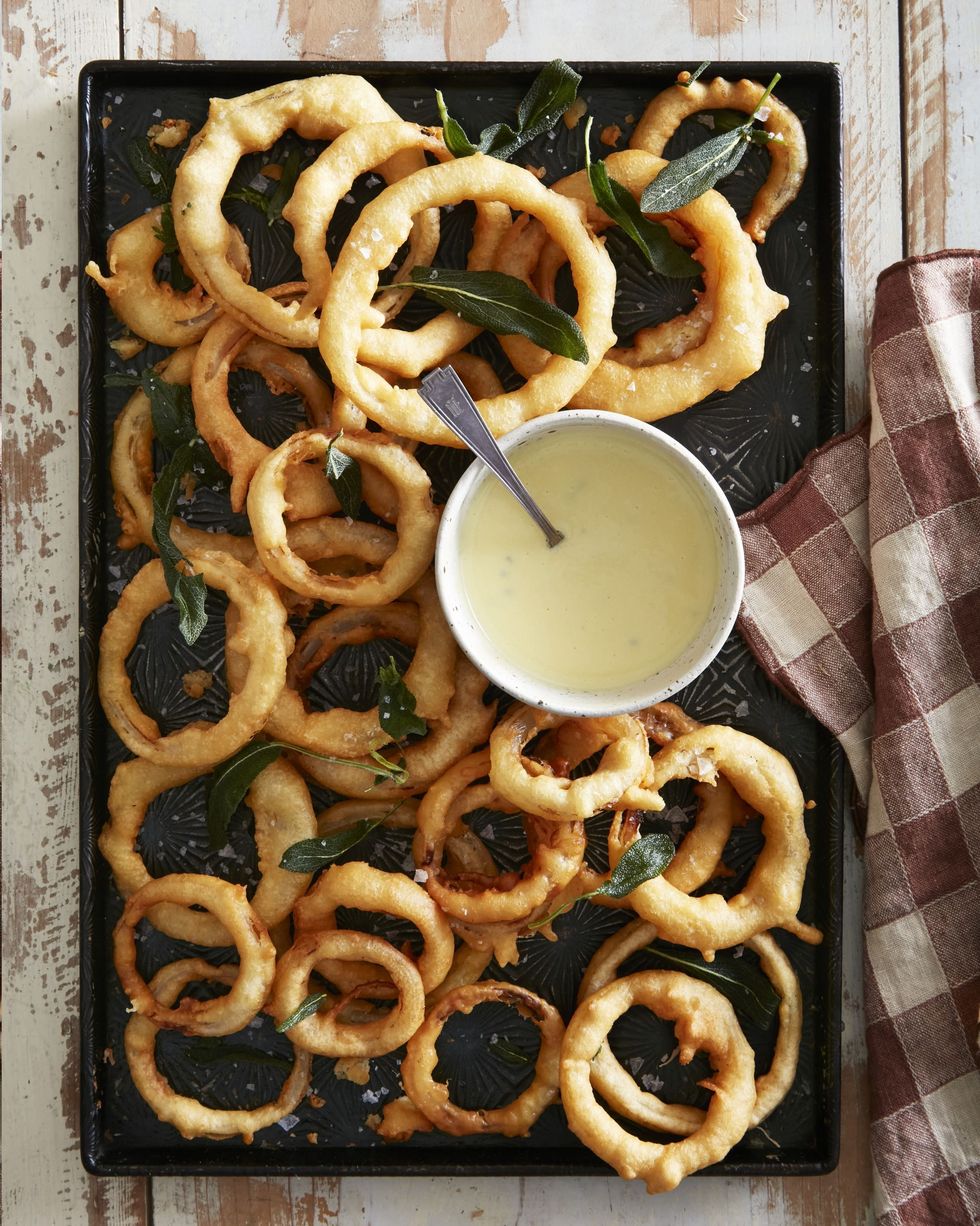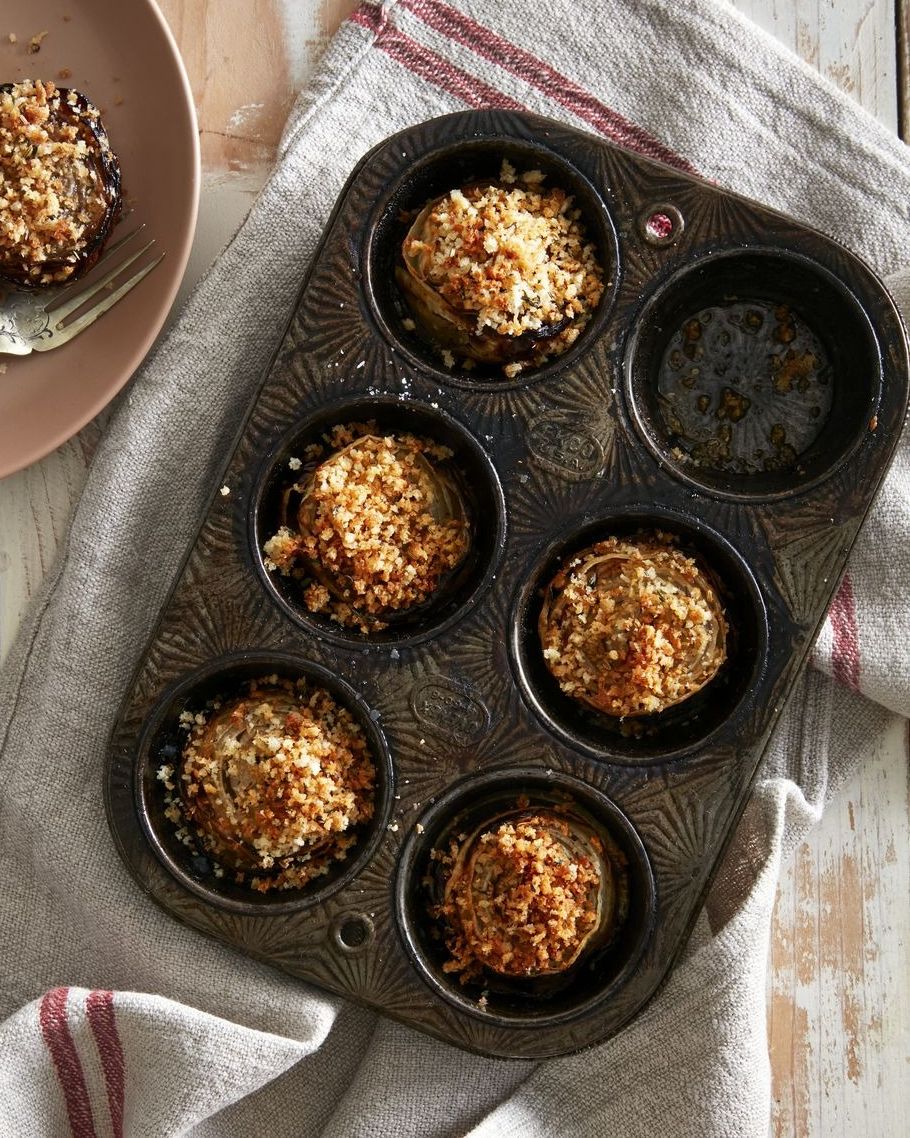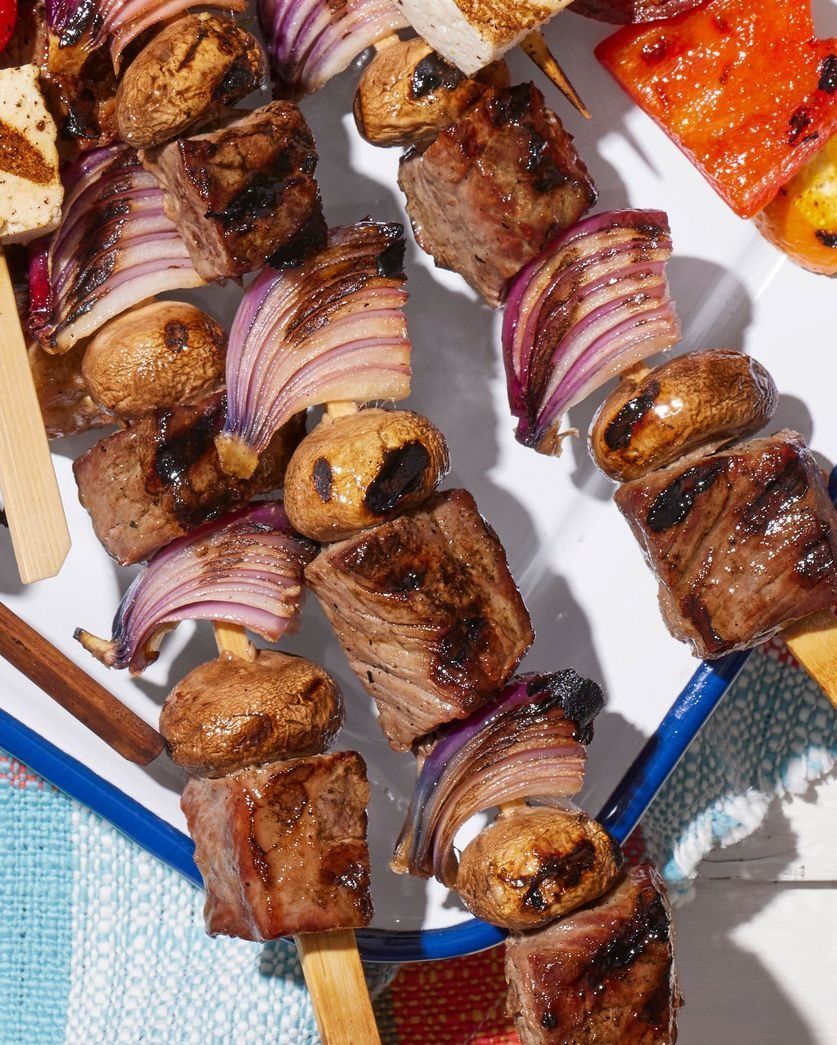If there's one ingredient you're likely to grab nearly every time you cook, it's an onion. Onions are a staple in all kinds of recipes, from easy summer appetizers and bbq side dishes to dinners and even brunch recipes. And for a good reason: Whether raw, caramelized, or grilled, they bring flavor and texture to a dish, without overwhelming the other ingredients.
Whether you’ve plucked a bunch you grew in your own garden or have a haul from the farmers' market or grocery store, you want to store them so they don’t go bad before you can use them all.
We’ve got some helpful tips for storing various types of onions various ways so you’ll be able to enjoy those alliums as long as possible.
Get the recipe: Onion Rings with Sage Aioli
How to Store Storage Onions
Storage onions are onions that, well, can be stored! There are white, red, and yellow varieties, and they're the ones you typically find in bags at the grocery store, and they simply need to be stored in a cool, dry place away from light, where they can often be kept for several months.
Moisture is the bad guy here, so the key is to keep them dry and well-ventilated. Your kitchen counter mostly likely gets too much light, but a cellar, pantry, basement, or garage that is dry and ventilated is perfect.
If you don’t have a spot like this in your house, you can store onions in the refrigerator, where they'll keep longer than on the counter. Be aware, however, that onions absorb moisture so they may change texture, softening a little bit. They will also likely last for a week or two instead of one or more months.
Wherever you end up stashing your storage onions, make sure to keep them well ventilated. The National Onion Association recommends against storing onions in plastic bags (such as the bag they came in) because it restricts air flow.
A popular trick is to store onions in a clean pair of stockings or pantyhose legs. Place one onion into the foot of the first leg and tie the hose in a knot to keep it in place. Add another onion and another knot, and so on and so forth. Repeat with the other leg. Now you can hang them in an appropriate place, and they’ll stay dry and ventilated!
You’ll also want to store these onions by themselves because they don’t play well with others. For example, the National Onion Association also recommends against storing onions with potatoes or other kinds of produce, as they tend to release moisture. The onions will absorb it and start to spoil. Another good reason to keep them separate? Onions are pretty pungent, and some fruits and vegetables can take on the onion's scent and flavor.
Storage onions can last for months if stored properly. Make sure to remove any that appear to be spoiling because this will cause the rest to begin deteriorating as well.
Get the recipe: Baked Onions with Fennel Breadcrumbs
How to Store Sweet Onions:
Sweet onions such as Vidalia, Walla Walla, or Maui have more moisture than storage onions, which makes them spoil faster. In this case, storing them in the refrigerator helps them last longer. The National Onion Association recommends wrapping each onion in a paper towel, whole and unpeeled, and keeping them in your fridge.
How to Store Green Onions (Scallions):
There are three different ways you can store green onions, which are also called scallions. The first option is to keep them in a jar on your windowsill. You need just enough water in the jar to cover the roots. This will help them stay fresh and also keep growing! Don’t forget to change the water every few days. Stored like this they should last several weeks -- as long as they keep growing!
You can also store green onions in a jar in your refrigerator. Place the jar in a grocery bag or zip-top bag but leave the bag open. Green onions need some breathing room! You could also put the jar in the fridge and place the bag loosely over the top, where they will last 2-3 weeks.
The third way to store green onions is to remove the roots. You may also need to cut the green onions in half so they’ll fit in a zip-top bag. Wrap them in damp paper towels, place in the bag, and leave the bag open (not sealed) in your refrigerator. They should last 1-2 weeks like that.
How to Store Cut Onions:
If you’ve cut an onion and need to store the rest of it, the National Onion Association recommends storing them in the refrigerator in a sealed container and using within 7 days. Remember that plastic will absorb the scent, so you might want to use a glass container, such as these glass storage containers on Amazon.
Get the recipe: Teriyaki Beef-and-Mushroom Kebabs
How to Freeze Onions:
If you have to, you can freeze onions. According to the National Center for Home Food Preservation, you can chop them, and then store them in a freezer bag with as much of the air pressed out as possible. Freezer bags are thicker than regular zip-top plastic bags, which will help prevent that pungent odor from spreading to other items in your freezer.
They might not look super fresh once thawed and the texture will deteriorate slightly, so they will need to be used in cooked dishes rather than as a garnish or in a salad. But as long as you use them within three to six months, they’ll still have plenty of flavor. One tip: store them in individual portions rather than one large bag (where they might freeze together) because they don’t re-freeze well once they’ve been thawed. You don’t want to waste any just because you had to thaw the whole block only to use a portion of it.
Now, if you’re looking for some delicious meals to make so you can use up that stash of onions you’ve got stored properly in your pantry, we recommend trying them in a French Onion Flatbread. If you’re firing up the grill this weekend, take a stab at these Pork, Pineapple, and Red Onion Kebabs. And you can never go wrong with classic French Onion Soup.















